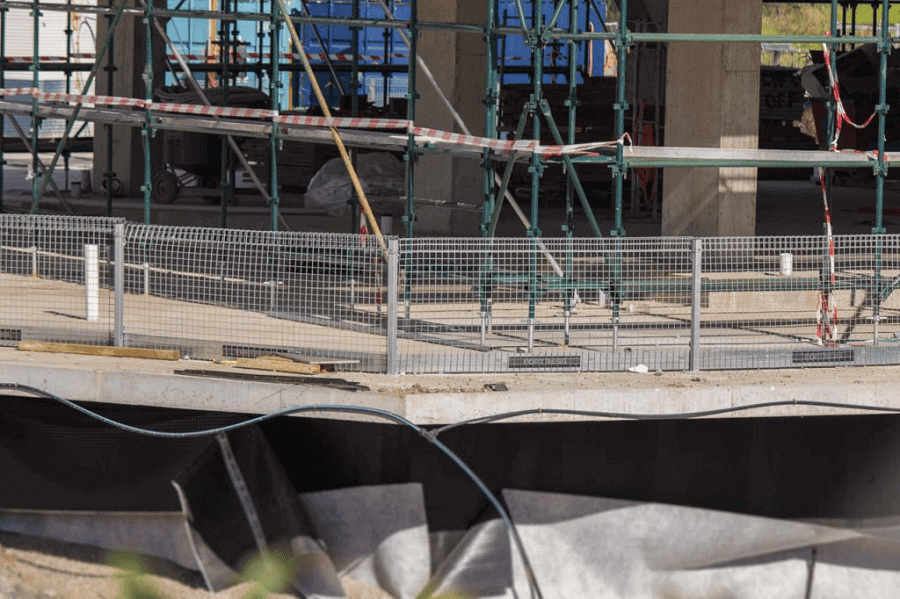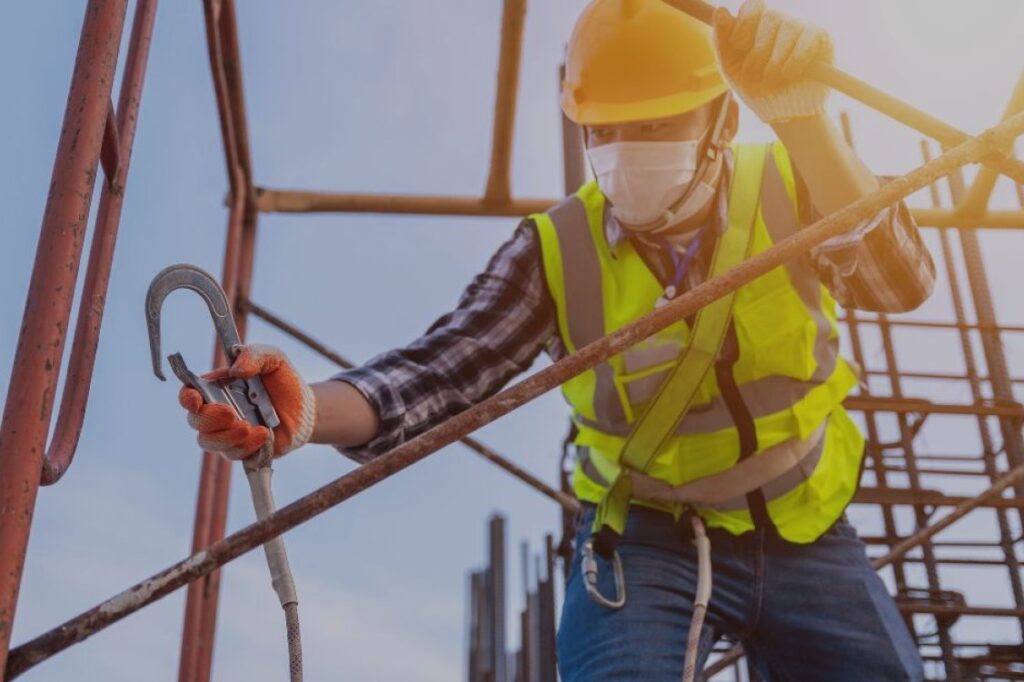
Introduction
Working at height is one of the most dangerous aspects of the construction and industrial sectors. Whether on scaffolding, rooftops, or steel frameworks, workers face significant fall risks every day. According to the International Labour Organization, falls from height are among the leading causes of occupational fatalities worldwide.
To minimize these risks, it’s critical to implement a comprehensive fall protection strategy that includes both passive and active safety measures. While some companies rely solely on personal protective equipment (PPE), this is not enough. A layered approach ensures redundancy and robustness in your fall protection plan. This article explores the differences between these two protection types, explains why both are necessary, and outlines best practices for keeping workers safe at height.
Understanding the Two Types of Fall Protection

What Is Passive Fall Protection?
Passive fall protection refers to built-in or engineered systems that protect workers without requiring any action on their part. These systems are always in place and are designed to eliminate or minimize the risk of falling by physically preventing access to hazardous areas.
Common examples of passive systems include:
- Guardrails and toeboards
- Safety nets
- Scaffolds with integrated protection, like edge protection systems
- Temporary or permanent barriers
- Platform covers over floor openings
Edge protection systems, for instance, are widely used on construction sites to prevent workers from accidentally stepping off the edge of a platform, roof, or scaffold. They consist of vertical posts, horizontal rails, and mesh panels or toe boards that form a physical barrier. Passive systems are especially useful because they do not rely on human behavior or training to be effective.
What Is Active Fall Protection?
Active fall protection, also known as active fall protection, requires workers to take specific actions, such as donning PPE or connecting to an anchor point. These systems don’t eliminate hazards but serve as a critical line of defense if a fall occurs.
Key active systems include:
- Full-body harnesses
- Shock-absorbing lanyards
- Self-retracting lifelines (SRLs)
- Anchor points and horizontal lifeline systems
- Fall arresters and rope grabs
A common and vital component is the Personal Fall Arrest System (PFAS), which consists of three main elements: an anchorage point, a full-body harness, and a connecting device (like a lanyard or SRL). When properly used, PFAS systems can stop a fall within seconds, reducing the chance of serious injury.

Why You Need Both Passive and Active Protection On-Site
No single type of fall protection is sufficient on its own. Passive systems are ideal for prevention, especially on large, flat surfaces or along perimeters. However, they are not always feasible in every scenario. In these cases, active systems become essential.
Here are a few reasons to combine both systems:
- Human error is inevitable: Workers may forget to tie off or use PPE incorrectly. Passive systems provide a constant barrier regardless of behavior.
- Variety of site conditions: Different work zones require different strategies. Passive protection might work on one level, while another requires PFAS.
- Regulatory compliance: Many safety standards, such as OSHA, ANSI, and EN regulations, recommend or require using multiple layers of fall protection.
- Enhanced safety culture: Implementing both systems sends a clear message that worker safety is a top priority.
Reduction in injury and downtime: Properly layered systems minimize accidents, leading to fewer delays and lower insurance costs.
Other Smart Safety Measures When Working at Height
Risk Assessment and Planning
Effective fall protection starts with a thorough risk assessment. Identify hazards such as unprotected edges, skylights, ladders, and unstable surfaces. Then, determine the most suitable control measures for each risk.
Best practices include:
- Conducting site-specific fall hazard analyses
- Consulting engineers or safety officers for system design
- Establishing clear fall protection plans before beginning work
- Documenting all procedures and assigning safety responsibilities
Training and Competency
Even the best fall protection systems are useless if workers don’t know how to use them. Comprehensive training is non-negotiable and should be tailored to the actual job conditions.
Key training topics:
- How to inspect and wear a full-body harness
- Proper use of lifelines, anchors, and connectors
- Recognizing fall hazards and unsafe behaviors
- Emergency response and rescue procedures
Training should be repeated periodically, and competency assessments should be part of ongoing safety programs.
Choosing the Right Equipment for Fall Protection
The right fall protection setup depends on the task, work environment, and worker access requirements. One-size-fits-all solutions rarely work in high-risk construction or industrial zones.
Factors to consider when selecting fall protection equipment:
- Work type: roofing, facade, maintenance, steel erection
- Height of work and distance to lower levels
- Presence of overhead hazards or limited anchor options
- Surface conditions (wet, icy, uneven)
- Worker mobility and range of movement
Essential safety components checklist:
- Edge protection systems
- PFAS kits (harness, lanyard, connectors)
- Self-retracting lifelines (SRLs)
- Secure anchor points (fixed or portable)
- Guardrails and platform covers
- Ladder cages or temporary stair towers
Scheduled inspection and maintenance logs
Conclusion
Fall protection at height is not optional—it’s essential. Whether you're on a large-scale commercial build or a small renovation project, safety should never be compromised. Relying on just one safety method leaves gaps that could lead to tragedy.
Combining passive protection like edge protection systems with active safety gear such as personal fall arrest systems ensures a more comprehensive defense against falls. This approach minimizes reliance on human behavior and meets international safety standards.
Key takeaways:
- Use both passive and active systems together for complete protection
- Always conduct site-specific risk assessments
- Invest in quality scaffolding and fall protection gear
- Train workers regularly and evaluate their competence
- Make safety planning a routine part of project management
For long-term success and worker wellbeing, safety must be built into the foundation of your work at height strategy.
FAQs
Passive protection requires no action from workers, while active systems involve equipment like harnesses and must be actively used.
Edge protection should be used anywhere there is a risk of falling from elevated surfaces, such as scaffolding edges, rooftops, or open floor slabs.
PFAS is critical, but it’s best used in combination with passive systems for maximum protection.
Before every use and at regular intervals by a qualified person—typically every 6 months or as recommended by the manufacturer.
Ringlock and Cuplock scaffolding systems offer excellent safety, especially when paired with integrated edge protection.
Yes. Most countries have stringent regulations (e.g., OSHA in the U.S., EN standards in Europe) that mandate specific fall protection measures depending on the job type and height.
